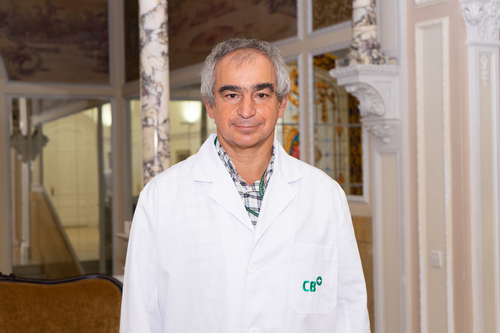- New cardiac devices allow MRI to be performed safely, thus guaranteeing minimal risk and always prioritizing the patient’s health.
Anyone who undergoes an MRI knows that they have to take into account a series of indications, including not carrying metal objects. This is because MRI equipment uses powerful magnets that attract the presence of metals, which can pose a risk to both people’s health and the operation of the equipment.
But what happens when someone can’t remove a metal object, such as a pacemaker? More and more people are implanted with these types of electronic heart devices to correct a slow or irregular heart rhythm.
At CreuBlanca, the examination is carried out using the 1.5-Tesla Orian (Toshiba) MRI equipment, located next to the 24-hour Emergency Service, in order to minimize risks and act as quickly as possible in the event of an emergency, explains the Dr. Xavier Alomar, head of Research, Development and Innovation (R+D+i) and director of the Diagnostic Imaging Unit at CreuBlanca.

MRI Compatible Cardiac Devices
Pacemakers vary depending on their therapeutic objective, material, and dimensions, however, they have two common denominators: they are subcutaneous, that is, they are implanted under the skin, so it is necessary to undergo an intervention to remove them; and, on the other hand, the electrodes that connect the pacemaker with the heart have ferromagnetic components, therefore, for many years they have been incompatible with resonance, causing major complications and potentially putting the patient’s health at risk, especially in patients dependent on pacemaker.
Among the most notable complications are overheating of the electrode, alterations in the pacing threshold and alterations in the detection of the heartbeat, explains Dr. Julio Martí, a CreuBlanca cardiologist specializing in electrophysiology and arrhythmias.
Currently, thanks to the latest technological advances, most of the implanted electronic cardiac devices are compatible with magnetic resonance, that is, they allow the examination to be carried out safely, thus guaranteeing the minimum risk and always taking the health of the patient as a priority.
At the CreuBlanca Arrhythmia Unit we implant pacemakers that incorporate two modes of operation: normal mode and MRI compatible mode. In this second mode, the pacemaker stops working temporarily and thus does not interfere with carrying out the diagnostic test, without implying any risk for the patient”, explains Dr. Julio Martí, a CreuBlanca cardiologist specializing in electrophysiology and arrhythmias.

Exclusive diagnostic circuit for patients with pacemakers
But how can we know if our device meets the resonance compatibility requirements? The doctor is responsible for reflecting in the patient’s report whether the pacemaker is compatible or not, as well as the model and characteristics of the device. However, before undergoing the test, there are several recommendations to keep in mind to avoid any problems.
First of all, it is essential to inform the specialist who prescribes the MRI that we are carriers of a pacemaker, showing him the implant report, which should state whether it is compatible with this test. In the event that it is not, the doctor will take the alternatives that he considers appropriate. When in doubt about the compatibility of the device, the patient must make an appointment with a specialist from our Cardiology Unit and provide the European identification card. Finally, once it has been demonstrated that the pacemaker is compatible, the patient must schedule the MRI appointment in coordination with the cardiology team, since it will be necessary to make a series of adjustments to the device before and after the test.
At CreuBlanca, we have a closed circuit to attend exclusively to patients with pacemakers. Before and after the test, our team of cardiologists visit the patient and make a series of adjustments to the device for the proper performance of the examination, so that it is controlled at all times. Our main objective is to offer a quality diagnosis through the most innovative processes, always with the best medical and human treatment.


